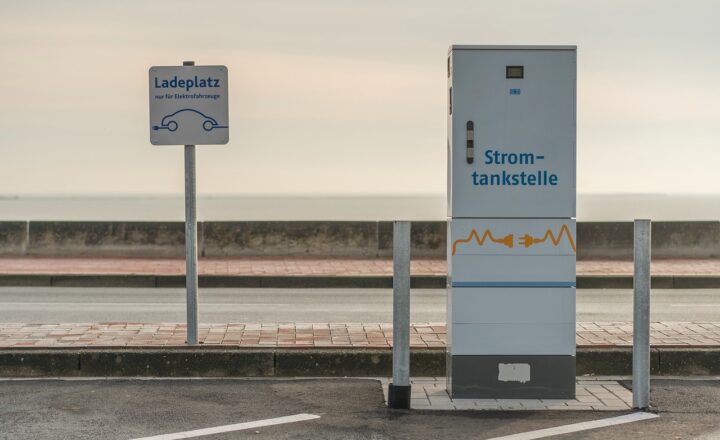The Rolls-Royce Silver Cloud: The Car That Defined Luxury in the 50s and 60s
November 13, 2024

The 1950s and 1960s marked a golden age for luxury automobiles, a time when cars weren’t just modes of transport but rather symbols of status, elegance, and craftsmanship. At the pinnacle of this luxurious automotive landscape was the Rolls-Royce Silver Cloud. This splendid vehicle would become synonymous with opulence and grandeur, embodying the spirit of a post-war era filled with ambition and excess.
1. The Birth of the Silver Cloud
The Rolls-Royce Silver Cloud made its debut in 1955, entering a market ripe for innovation and luxury. It was crafted as a successor to the Silver Dawn, aiming to elevate the company’s reputation further as a premier luxury automobile manufacturer. The Silver Cloud was an immediate hit due to its remarkable combination of discernible elegance, effortless performance, and meticulous craftsmanship.
One of the few luxury vehicles to be produced in this era, the Silver Cloud came with an impressive engine—a 4.9-litre inline-six. This was significant for its time, as it allowed Rolls-Royce to showcase an effortless driving experience coupled with exhilarating power. Offering an outstanding balance of comfort and performance, the Silver Cloud captured the attention of the wealthy elite and celebrities alike.
2. Design and Features: The Epitome of Elegance
The design of the Rolls-Royce Silver Cloud was revolutionary, encapsulating the essence of British engineering and style. The car featured a long hood and a graceful, flowing body that hinted at the luxury within. The overarching aesthetics were complemented with stunning chrome details, including the iconic Rolls-Royce grille adorned with the revered Spirit of Ecstasy statuette.
Inside, the Silver Cloud was a veritable palace on wheels. Upholstered in fine leather and plush carpeting, the cabin offered unrivaled comfort for both the driver and passengers. A range of customizable options allowed owners to tailor their vehicles to showcase their unique tastes. From bespoke wooden veneers to tailored leather seating, each Silver Cloud was as unique as its owner.
The car also featured advanced (for its time) technology, including an automatic transmission that ensured a smoother driving experience. Furthermore, the engineering and suspension systems were designed meticulously to provide an unmatched level of comfort—even on the bumpiest of roads.
3. The Silver Cloud Models: A Legacy of Refinement
During its production run from 1955 to 1966, three variants of the Silver Cloud were introduced: the Silver Cloud I, II, and III. Each iteration incorporated various enhancements, ensuring that owners always had access to the latest advancements in luxury and performance.
– Silver Cloud I (1955-1959): This was the inaugural model with a classic look and the revered inline-six engine. It established the Silver Cloud as a marvel of engineering and design.
– Silver Cloud II (1959-1962): Featuring a powerful 6.2-litre V8 engine, this model provided improved performance and a smoother ride. It also introduced more luxurious interior features that set the standard for the future.
– Silver Cloud III (1962-1966): This final generation included subtle design enhancements, notably to the headlights and grilles. It offered power steering, making it easier to maneuver—a significant consideration given the vehicle’s size.
Every model retained the essence of luxury and class that characterized the Silver Cloud name. They became a favorite among celebrities, politicians, and royals, embodying an era where the automobile was an extension of one’s social stature.
4. Cultural Impact and Celebrity Status
The Silver Cloud’s reputation extended far beyond its engineering and design; it became a cultural icon. Owning a Rolls-Royce was an unmistakable statement of wealth and success. Celebrities like Winston Churchill, Queen Elizabeth II, and the British aristocracy often used their Silver Clouds as their vehicles of choice, reinforcing its association with affluence and elegance.
Moreover, the presence of the Silver Cloud in various films and Hollywood productions elevated its status further. It frequently appeared in scenes detailing class and sophistication, making it a popular prop in the cinematographic world.
In the USA, the Silver Cloud was affectionately known as the “The Car of Kings”, associating it with grandeur, both in the eyes of the consumer and popular media.
5. The End of an Era and Continuation of Legacy
By the late 1960s, the automotive landscape began to change, introducing new ideas of luxury and engineering. The demand for high-performance cars that could seamlessly blend sportiness with style grew rapidly, leading to the development of new models from Rolls-Royce and competitors. Despite its discontinuation, the Silver Cloud remains a monumental representation of luxury automotive history.
Today, vintage car collectors and enthusiasts still celebrate the Silver Cloud, often showcasing it at events and auctions worldwide. The timeless elegance and craftsmanship continue to captivate audiences, solidifying its status as one of the greatest luxury cars ever produced.
6. Conclusion: A Timeless Symbol of Luxury
The Rolls-Royce Silver Cloud stands as a testament to a bygone era where luxury was defined not just by performance but by an entire experience—a generous helping of craftsmanship, tradition, and prestige. This exemplary vehicle wove itself into the fabric of society, influencing perceptions of what it meant to own a luxury car.
The Silver Cloud remains a symbol of sophistication and elegance. To this day, it serves as an inspiration for automotive designers and a cherished piece for collectors, representing an era that defined luxury in more ways than one, and leaves us yearning for the unparalleled craftsmanship and timeless beauty of the luxury vehicles of yesteryear.





